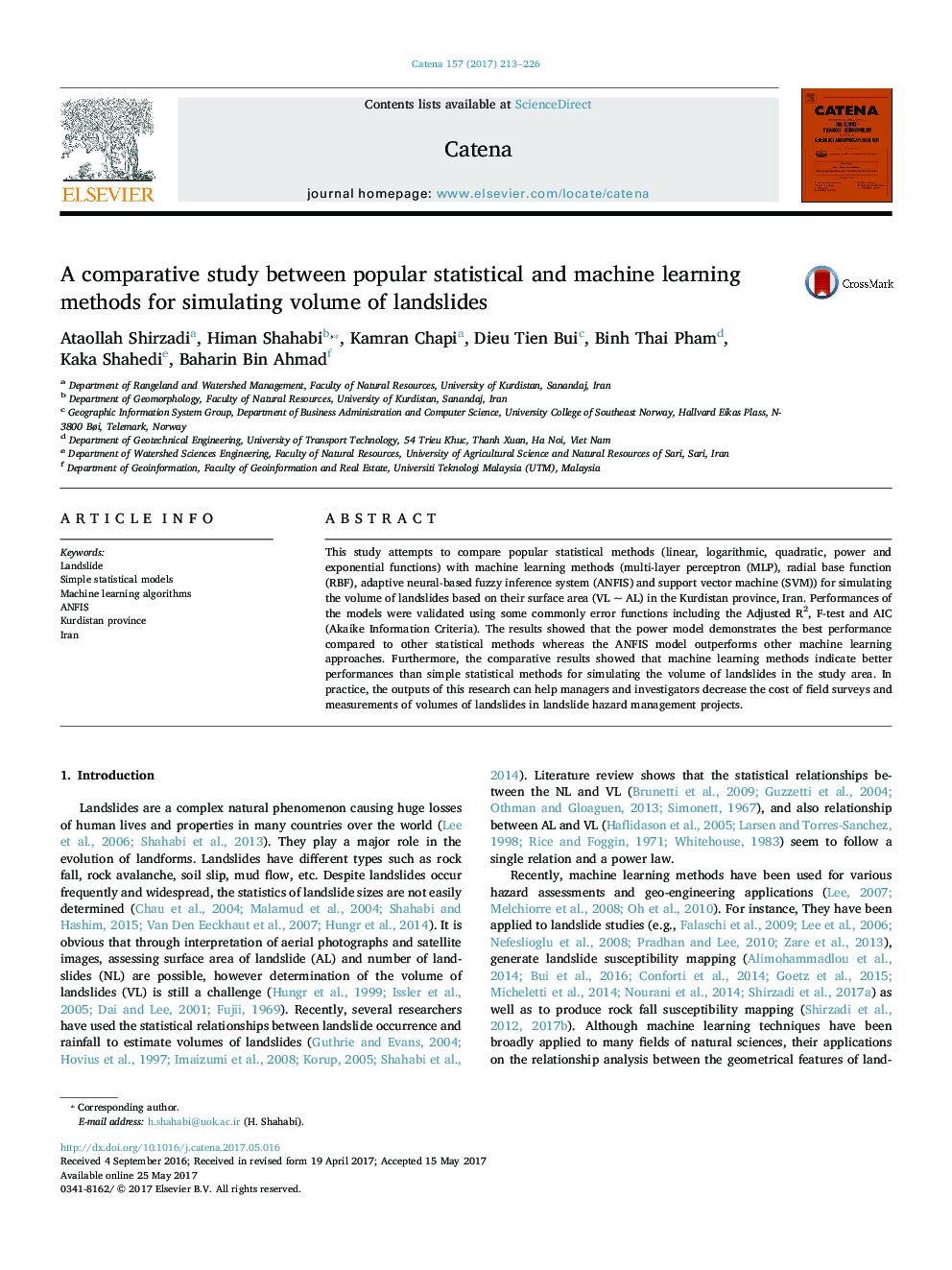| Article ID | Journal | Published Year | Pages | File Type |
|---|---|---|---|---|
| 5769860 | CATENA | 2017 | 14 Pages |
â¢The simulating of landslides volume using popular statistical and machine learningâ¢Performance of the models was validated using Adjusted R2, F-test and AIC.â¢Machine learning methods have better performance than simple statistical methods.â¢The obtained results can help to decrease the cost of landslide hazard management.
This study attempts to compare popular statistical methods (linear, logarithmic, quadratic, power and exponential functions) with machine learning methods (multi-layer perceptron (MLP), radial base function (RBF), adaptive neural-based fuzzy inference system (ANFIS) and support vector machine (SVM)) for simulating the volume of landslides based on their surface area (VLÂ ~Â AL) in the Kurdistan province, Iran. Performances of the models were validated using some commonly error functions including the Adjusted R2, F-test and AIC (Akaike Information Criteria). The results showed that the power model demonstrates the best performance compared to other statistical methods whereas the ANFIS model outperforms other machine learning approaches. Furthermore, the comparative results showed that machine learning methods indicate better performances than simple statistical methods for simulating the volume of landslides in the study area. In practice, the outputs of this research can help managers and investigators decrease the cost of field surveys and measurements of volumes of landslides in landslide hazard management projects.
